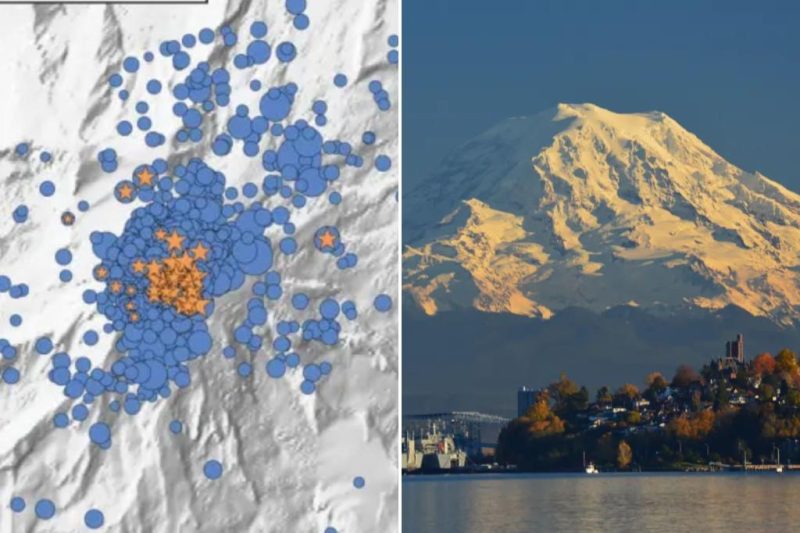
Early Tuesday morning, the ground beneath Mount Rainier in Washington State trembled with the energy of hundreds of small earthquakes. This seismic swarm, detected deep within the mountain, has naturally sparked interest and concern, prompting geologists to issue statements reassuring the public.
While the sheer number of tremors is noteworthy, scientists emphasize that these earthquakes are relatively small and, at this stage, do not indicate an imminent eruption. The Pacific Northwest is a seismically active region, and such earthquake swarms are not uncommon around volcanoes. They are often attributed to the movement of magma or hydrothermal fluids within the Earth’s crust. The USGS and other monitoring agencies are closely tracking the situation, continuously analyzing the data to better understand the cause and implications of this seismic activity.
The ongoing monitoring efforts involve a sophisticated network of seismometers strategically placed around Mount Rainier. These instruments provide crucial data on the location, depth, and magnitude of each earthquake, allowing scientists to build a detailed picture of what’s happening beneath the surface. This information is vital for assessing potential risks and informing any necessary emergency preparedness measures.
Although the current situation doesn’t signal immediate danger, the event serves as a reminder of the dynamic geological processes at play in the region. Mount Rainier, an active volcano, has a history of both explosive eruptions and periods of seismic unrest. Continued vigilance and scientific observation are crucial for maintaining public safety and understanding the complex behavior of this majestic and potentially hazardous mountain.










